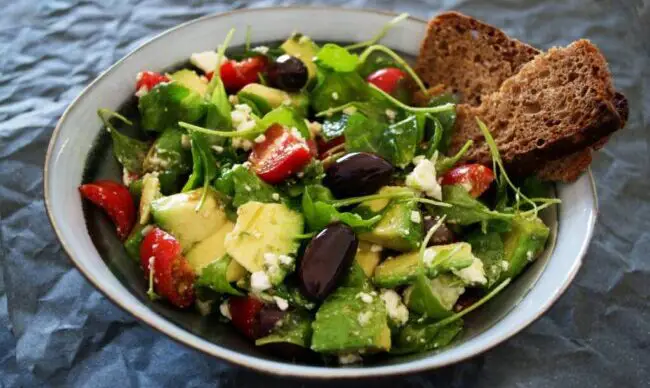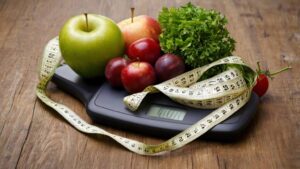The Benefits of Nutrition for Stroke Prevention in 2023

Stroke is one of the leading causes of disability and death worldwide, and its incidence is increasing due to the aging population. While there is no cure for stroke, many risk factors such as hypertension, diabetes, and high cholesterol can be modified to reduce the risk of stroke. Nutrition is one of the key modifiable factors that can have a profound impact on stroke prevention. A healthy diet can lower blood pressure, reduce cholesterol levels, and improve blood glucose control, all of which are important risk factors for stroke.
In this blog post, I’ll explore the benefits of nutrition for stroke prevention. I’ll delve into the latest research and evidence-based recommendations for a healthy diet that can help reduce the risk of stroke. I’ll discuss the role of specific nutrients such as fiber, potassium, and omega-3 fatty acids, and how they can contribute to stroke prevention. I’ll also provide practical tips and strategies for incorporating healthy eating habits into daily life.
Nutrition and Stroke Prevention
Stroke is the fifth leading cause of death in the United States and the number one cause of death for women. The American Heart Association (AHA) recommends that everyone age 50 and older get a heart health checkup, including a blood test for stroke risk. There are many ways to reduce your risk of stroke, including quitting smoking, exercising regularly, and eating a healthy diet. Nutrition is an important factor in stroke prevention. A healthy diet can help reduce the risk of heart disease, stroke, and other types of cancer.
Good nutrition can help reduce the risk of heart disease, stroke, and other types of cancer. A healthy diet includes:
– Plenty of fruits and vegetables
– Low-fat and nonfat dairy products
– Fish and seafood, including lean sources
– Whole grains
– Lean protein, including poultry, fish, and beans
– Low-sugar foods
One of the ways to reduce the risk of stroke is to maintain a healthy weight. According to the CDC, being overweight or obese is a major risk factor for stroke. In addition, being overweight or obese can increase your risks of other chronic diseases, such as heart disease, type 2 diabetes, and cancer. Therefore, it is important to make a concerted effort to reduce your weight and improve your overall health.
Another way to reduce the risk of stroke is to maintain a healthy diet. A healthy diet includes foods that are high in fruits and vegetables, whole grains, and low-fat dairy products. In addition, a healthy diet includes moderate amounts of protein and fat. A healthy diet can help to reduce your risk of stroke by reducing your risk of heart disease, type 2 diabetes, and cancer.
In addition, it is important to maintain a healthy weight and a healthy diet in order to reduce your risk of stroke. However, stroke can also be prevented by maintaining good health and nutrition. Health nutrition includes foods that are high in fruits and vegetables, whole grains, and low-fat dairy products. These foods are important sources of vitamins, minerals, and fiber. In addition, healthy nutrition includes moderate amounts of protein and fat. These nutrients are important for the maintenance of a healthy weight and the prevention of chronic diseases.
Nutrition is an important part of stroke prevention. A diet that is high in fiber, protein, and healthy fats can help to reduce the risk of stroke. Additionally, eating a balanced diet and getting enough exercise can also help to reduce the risk of stroke.
Benefits of Eating Healthy
A healthy diet can help prevent strokes by reducing the risk of heart disease and other chronic conditions, such as obesity and type 2 diabetes. A diet high in fruits, vegetables, and whole grains, as well as low in saturated and unhealthy fats, can help reduce the risk of stroke. Some specific nutrients that play a role in stroke prevention include:
-Vitamin C:
Vitamin C is important for the body’s immune system and helps to prevent stroke by reducing the risk of blood clots.
-Folic acid:
Folic acid helps to prevent birth defects of the brain and spine and is also important for the prevention of stroke.
–Iron:
Iron is important for the production of red blood cells and is necessary for the growth and development of the brain and spinal cord.
–Selenium:
Selenium is important for the body’s immune system and helps to prevent stroke by reducing the risk of blood clots.
How Nutrition Affects Stroke Prevention
There are many reasons why people might choose to adopt certain dietary practices. Some of these reasons might include reducing hypertension, cholesterol, weight gain, or other risk factors. One dietary practice that has been shown to be beneficial is the consumption of fruits and vegetables. Consuming fruits and vegetables have been shown to reduce blood pressure levels and cholesterol levels. It has also been shown to reduce the risk of obesity and other chronic diseases.
Another dietary practice that has been shown to be beneficial is the consumption of whole grains. Whole grains are high in fiber and other nutrients, which can help to reduce the risk of heart disease and other chronic diseases. There are many other dietary practices that have been shown to be beneficial. It is important to consult with a healthcare provider to see if any of these practices might be beneficial for you.
The Role of Physical Activity in Stroke Prevention
Eating healthily for stroke prevention has many benefits, such as reducing the risk of heart disease and stroke, as well as improving overall health. However, eating healthily can be challenging for many people, especially those who have difficulty following a restrictive diet. Additionally, many people who are stroke-prone may also have other health conditions that make it difficult to adhere to a healthy diet.
There are many potential long-term benefits to following dietary regulations for stroke prevention, including improved mental and physical health overall. In addition to reducing the risk of stroke, following these guidelines may also reduce the risk of other chronic diseases, such as heart disease and type 2 diabetes. Additionally, following specific dietary guidelines may help to improve cognitive function and memory.
Types of Diets to Reduce Stroke Risk
There are a number of challenges that people may face when it comes to making dietary changes for better health, such as cost or time constraints or difficulty doing grocery shopping. One common challenge is that people may be unaware of how healthy and affordable changes to their diet can be. Another challenge is that it can be difficult to stick to a diet when it is new and different, or when social norms or habits prevent people from making changes. Finally, many people find it difficult to make lasting changes to their diet, even if they are motivated to do so.
There are a few things you can do to help prevent stroke. One is to eat a balanced diet that includes plenty of fruits, vegetables, and whole grains. You also need to get enough exercise. Exercise can help reduce your risk of developing heart disease and stroke.
There are many ways to make healthy food choices while considering a person’s budget and lifestyle needs. One way is to find affordable and healthy foods that fit into a person’s daily routine. Another way is to make healthy food choices when grocery shopping. For example, buying fruits and vegetables that are in season or buying items that are lower in sugar or sodium. There are also many ways to make healthy food choices when dining out. For example, choosing healthier options such as grilled chicken instead of fried, ordering a side salad instead of french fries, or choosing water instead of sugary drinks.
There is no question that eating a healthy diet is important for preventing stroke, but it is also important to remember that a healthy diet does not need to be expensive or difficult to follow. In fact, many of the best foods for stroke prevention are also some of the cheapest and easiest to find.
Some of the best foods for stroke prevention include:
• Vegetables and fruits:
Both of these foods are packed with fiber, vitamins, and minerals, which are all important for preventing stroke.
• Lean meats:
Lean meats are a great source of protein and other important nutrients, which can help to keep you feeling full and help to reduce your risk of stroke.
• Whole grains:
Whole grains are a great source of fiber, which can help to keep you feeling full and help to reduce your risk of stroke.
• Low-fat and fat-free foods:
Low-fat and fat-free foods are a great source of healthy fats, which can help to reduce your risk of stroke.
There are many potential benefits to exploring healthier options within your means. By making small changes to your diet and lifestyle, you can improve your overall health and well-being.
Some of the benefits of healthier eating include:
Improved mental health
Reduced risk of chronic diseases
Lower risk of obesity and related health problems
Improved physical health
Improved energy levels
Improved moods
Tips to Maintain a Healthy Diet
If you’re interested in exploring healthier options within your means, here are some tips to help you get started:
1. Start by identifying your favorite unhealthy foods and make a list of substitutions. For example, if you love pizza but want to cut out the processed cheese, you could try using shredded cheese on a homemade pizza instead.
2. Make a grocery list of healthy foods that you can easily purchase and prepare. Try to include items like fruits, vegetables, whole grains, and low-fat proteins.
3. Set realistic goals for yourself and be patient. It can take some time to make significant changes to your diet, but the benefits are worth it!
In conclusion, stroke prevention through nutrition is a long-term investment in health. Eating nutritious foods and maintaining a healthy diet can help reduce the risk of stroke and other cardiovascular diseases. In addition, research is ongoing to further understand the effects of nutrition on stroke prevention and to develop better strategies to reduce the risk. With continued support and research, nutrition can be a powerful ally in stroke prevention for 2023 and beyond. Thank you for reading my post.







